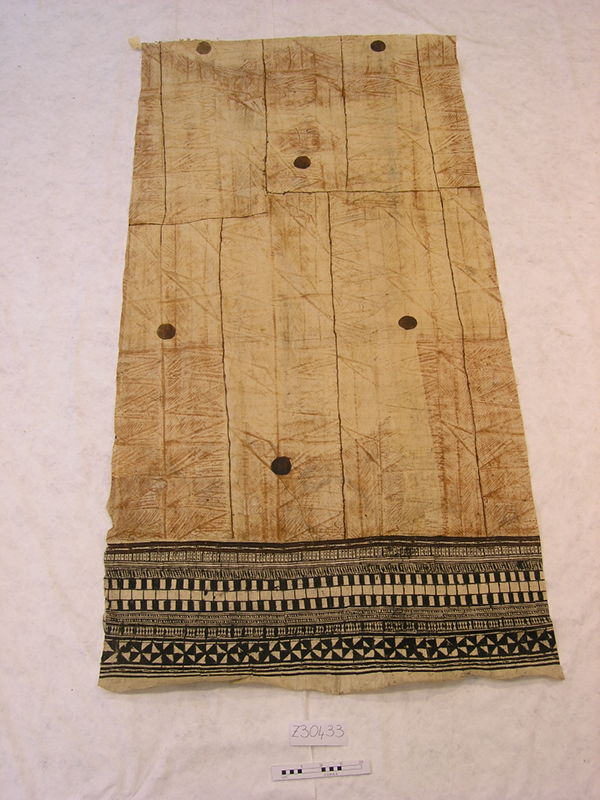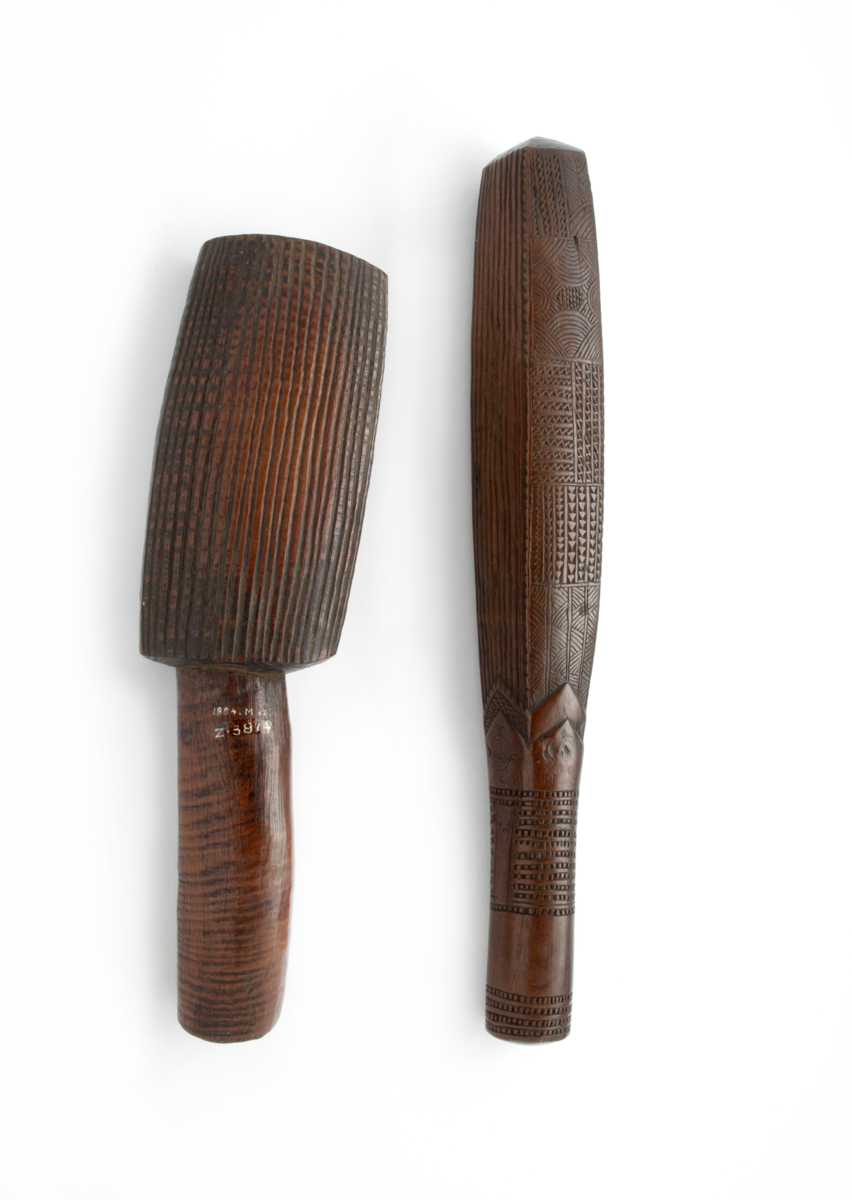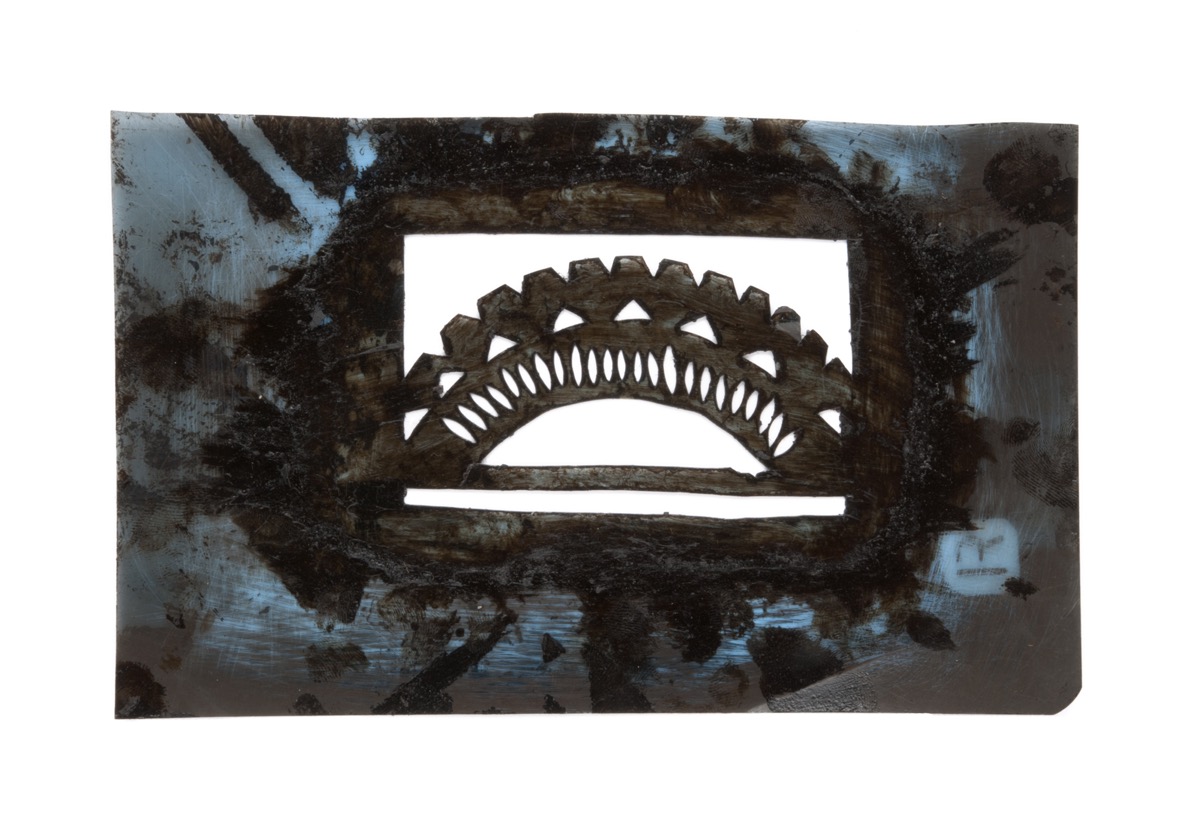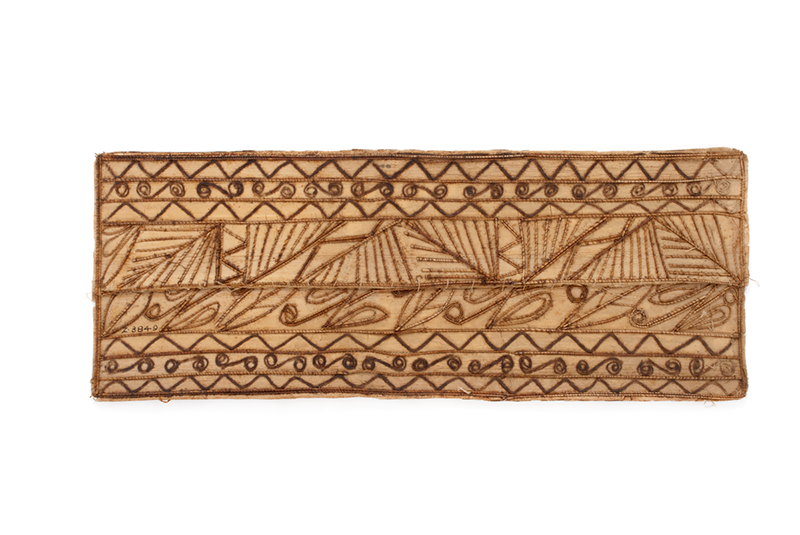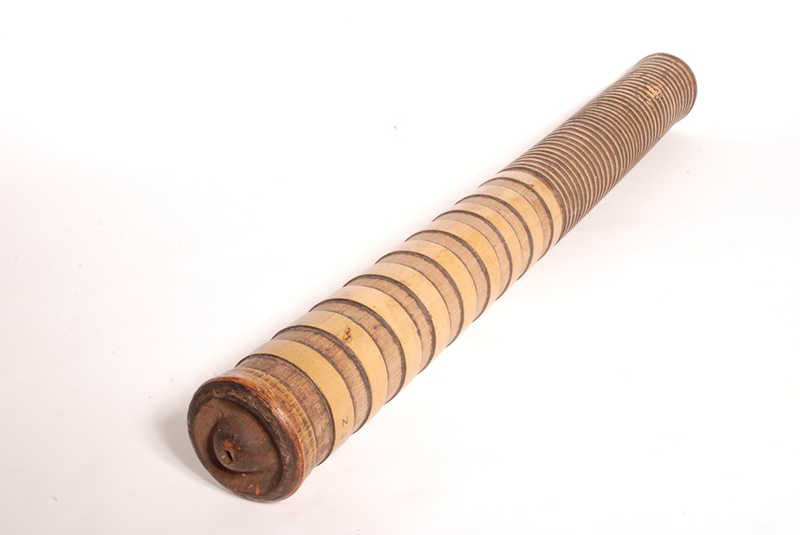"The rhythmic strokes of the masi mallets is the first sound that greets you as you approach any village... and the last you hear as you go away..."
- Anatole von Hügel's Journals, 1 June 1876
Barkcloth, known as masi in Fiji, is widespread throughout Polynesia, with particular styles and methods of decoration associated for specific areas. Historically Fijian masi was used for men's clothing, bedding, house partition and mosquito curtains, as well as for enormous decorated presentation cloths. The enduring significance and the centrality of masi to Fijian culture is still evident in ceremonial presentations and life-cycle events.
Masi is made from the inner bark of the paper mulberry tree (Broussonetia papyrifera). Made exclusively by women, the bark is stripped from the stem, soaked and then beaten with a wooden mallet (ike) into sheets of varying thickness and size.
Very fine white masi (seyavu), sometimes smoked to a rich red colour (masikuvai), was and is worn by chiefs. Masi can also be decorated with dye (kesa) made of vegatable and mineral components. THe use of stencils (draudrau), originally made of leaf but nowadays x-ray film, appears to be unique to Fiji in the Pacific region. In the Lau islands of eastern Fiji a Tongan-style rubbing technique using a tablet or rubbing board (kupeti) was also used on large sheets of cloth. The resulting cloth, (gatuvakatoga), was favoured for use in chiefly ritual.
Use the drop down menu below to explore the objects in this section.
Barkcloth. Black, white and red-brown. Fiji, Polynesia. Z 30433.
1. Mallet, Ikenimasi (below, right).
Used for beating barkcloth. The elaborate handle suggests use by women of chiefly rank.
Rakiraki, Ra, Viti Levu, Fiji. Collected by A. von Hügel, 1875-77. Z 3822
2. Mallet, Ikenimasi (below, left)
Used for beating barkcloth. This type is specific to the highlands of Viti Levu.
Design cut in a sheet of x-ray film used to decorate masi.
Palm leaf rubbing form, of Tongan origin, used to decorate barkcloth in the Lau islands.
Bamboo roller used to decorate barkcloth in the highlands of Viti Levu.
Noemalu, Naitasiri, Viti Levu, Fiji. Collected by A. von Hügel, 1875-77. Z 3826
Cut from a larger piece, this barkcloth brings together the rubbed style of Tongan decoration with Fijian stencilled designs along the border. This combination of influences is embodied by its name, gatuvakaviti, literally meaning 'Tongan-type barkcloth in Fijian style'. This distinctive type of cloth is likely to have developed as a result of Tongan influence in Fiji in the 1700s.


